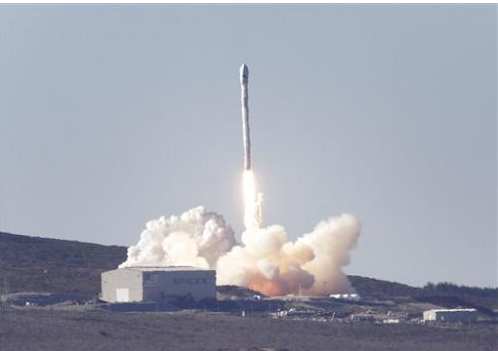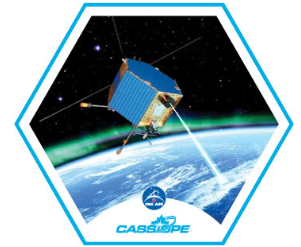
A SpaceX Falcon 9 rocket is launched from Vandenberg Air Force Base Sunday, September 29, 2013 as it makes its West Coast debut from Space Launch Complex-4. (AP Photo/The Times, Daniel Dreifuss)
CASSIOPE is a multi-purpose mission designed to conduct space environment research and telecommunications technology demonstration. Its scientific payload ePOP (enhanced polar outflow probe) will observe the ionosphere and enable scientists to collect new data on space storms in Earth’s upper atmosphere and assess their potential impacts. This was the first time the Southern California-based private rocket maker flew the next-generation version that boasts upgraded engines designed to improve performance and deliver heavier payloads.
CASSIOPE also includes the Cascade technology demonstrator for high speed store and forward information delivery. The communications technology demonstrator payload, entitled Cascade, serves as the second mission payload. Cascade will provide a 'proof of concept' design for a high volume store-and-forward data communications operational concept.
Like a courier in the sky, Cascade's operational concept is to pick up very large digital data files and deliver them to almost any destination in the world.
CASSIOPE's hexagonal Smallsat bus platform measures only 180 cm long and 125 cm high. It is more cost effective to construct and launch several small satellites with different goals than combining all the functionality on one big satellite. In addition to reducing the risk, this means that the satellites achieve their scientific or commercial objectives at a more reasonable cost.
The new platform produced for the CASSIOPE mission will also be versatile: it will be possible to adapt and use it for various missions involving science, technology, Earth observation, geologic exploration and information delivery. Professor Andrew Yau of the University of Calgary directs the ePOP project and a team comprised of researchers and engineers from seven Canadian universities. The Communications Research Centre, located in Ottawa, as well as the Institute of Space and Astronautical Science of Japan and the U.S. Naval Research Laboratory are also partners in the project.


